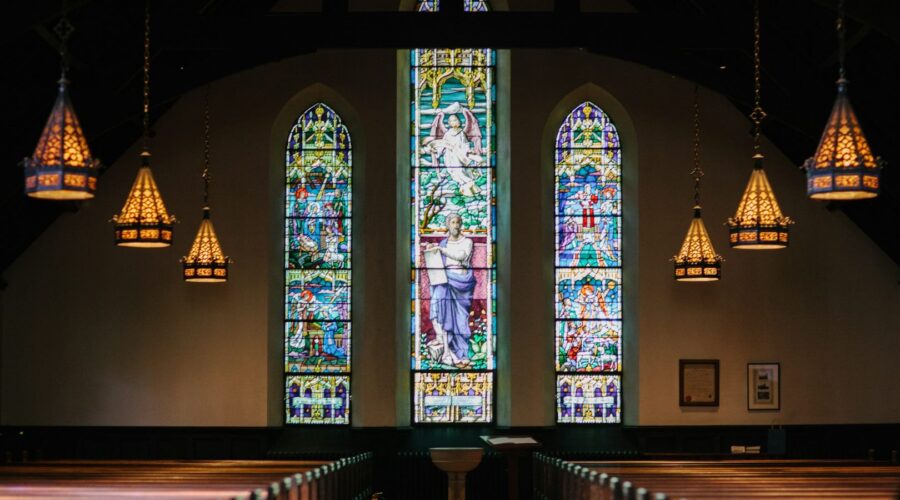Your cart is currently empty!
Blog

Find the Nearest Church: A Comprehensive Guide for Finding a Spiritual Home
Introduction
In the hustle and bustle of everyday life, it can be challenging to connect with our spiritual side. Finding a church that aligns with our beliefs and provides a welcoming community can make all the difference in our spiritual journey. This comprehensive guide will provide you with everything you need to know about finding the nearest church, ensuring that you can easily locate a place of worship that resonates with you.
Methods for Finding the Nearest Church
1. Online Church Directories
There are numerous online church directories that provide an extensive list of churches in a specific area. These directories allow you to filter your search based on denomination, location, and other preferences. Some popular church directories include:
2. Maps and Search Engines
Using search engines like Google or Bing, you can type in “church near me” to find the nearest churches. You can also use maps apps like Google Maps to locate churches in your area. These tools provide basic information about each church, such as its address, phone number, and website.
3. Local Listings and Advertisements
Many churches advertise in local newspapers, community bulletin boards, and online classifieds. These listings typically include the church’s name, address, and service times. You can also check with local businesses and community centers for flyers or brochures about nearby churches.
4. Word-of-Mouth Referrals
Talking to friends, family, neighbors, or colleagues about their church experiences can provide valuable insights. If someone you know attends a church they are passionate about, they might be willing to share their positive experiences and recommend it to you.
Factors to Consider When Choosing a Church
1. Denomination and Beliefs
Consider the theological beliefs and practices that are important to you. Research different denominations and their core teachings to find a church that aligns with your spiritual values and beliefs.
2. Service Times and Location
Determine the service times that work best for your schedule and the distance you are willing to travel. Consider the church’s proximity to your home, work, or other commitments.
3. Community and Involvement
Look for a church that has a welcoming and supportive community. Consider whether the church offers opportunities for involvement, such as small groups, Bible studies, or volunteer activities.
4. Church Size and Atmosphere
Reflect on the size and atmosphere of the church that you prefer. Some people enjoy the intimacy of a small church, while others prefer the larger scale of a megachurch. The atmosphere can also vary, from traditional to contemporary.
Tips for Visiting a New Church
1. Be Open-Minded
Approach your visit with an open heart. Remember that every church is unique, and it may take some time to find the right fit.
2. Dress Appropriately
Consider the dress code at the church you are visiting. Err on the side of caution and dress respectfully, whether that means business casual or formal attire.
3. Introduce Yourself
Don’t be afraid to introduce yourself to the pastor or church staff. They will be happy to answer any questions you may have and provide further information about the church.
4. Pay Attention
During the service, pay attention to the sermon, music, and overall atmosphere. Consider whether the church’s teachings resonate with you and if the community feels welcoming.
5. Follow Up
After visiting a church, take some time to reflect on your experience. If you felt a connection, consider following up with the church by attending another service or contacting the pastor.
Conclusion
Finding the nearest church should not be a daunting task. By utilizing the methods outlined in this guide and considering the factors that are important to you, you can easily locate a place of worship that fulfills your spiritual needs. Remember that the most important aspect is finding a church where you feel connected, supported, and inspired in your faith journey.

Unlocking the Potential of Discipleship Ministries: A Comprehensive Guide
Introduction
Discipleship ministries are vital components of any church or Christian organization, fostering spiritual growth and fostering a deeper relationship with Jesus Christ. This comprehensive guide will explore the key aspects of discipleship ministries, empowering you to create a dynamic and transformative experience for individuals within your congregation.
Understanding Discipleship
Definition
Discipleship is the process of intentionally guiding and mentoring individuals in their spiritual journey, helping them mature in their faith and become fully devoted followers of Christ.
Objectives
- Foster a deep and personal relationship with Jesus Christ
- Develop a sound understanding of biblical teachings
- Equip individuals to live Christ-like lives
- Train and empower future leaders
Establishing a Discipleship Ministry
Creating a Vision and Mission
Clearly define the purpose and objectives of your discipleship ministry, aligning it with the overall vision and mission of the church.
Recruiting and Training Leaders
Identify and equip individuals with a passion for discipleship and the ability to guide others in their spiritual growth.
Developing a Curriculum
Create a structured and engaging curriculum that covers essential biblical teachings, practical application, and spiritual exercises.
Effective Discipleship Practices
One-on-One Discipleship
Foster personalized connections by pairing individuals with experienced mentors who can provide individualized guidance and support.
Small Group Discipleship
Create small groups that facilitate interactive discussions, shared experiences, and accountability.
Retreats and Workshops
Provide opportunities for extended periods of focused spiritual growth and learning through retreats and workshops.
Measuring and Evaluating Discipleship
Tracking Progress
Establish clear metrics to track progress, such as attendance, engagement, and spiritual development.
Feedback and Evaluation
Regularly seek feedback from participants and leaders to assess the effectiveness of the ministry and make necessary adjustments.
Table: Sample Discipleship Training Curriculum
| Module | Topic | Learning Objectives |
|:—|:—|:—|
| Module 1 | The Basics of Christianity | Define core Christian beliefs, explore the life of Christ |
| Module 2 | The Bible: God’s Word | Understand the structure, content, and principles of the Bible |
| Module 3 | Prayer and Spiritual Growth | Learn the importance of prayer, develop a personal prayer life |
| Module 4 | Christian Character | Explore biblical principles for living a godly life |
| Module 5 | Evangelism and Outreach | Gain practical skills for sharing the gospel and reaching out to others |
Links to Resources
Tips for Enhancing Discipleship
- Foster a culture of discipleship in the entire church
- Utilize technology to support and connect disciples
- Celebrate milestones and successes
- Continuously evaluate and improve the ministry
- Collaborate with other ministries within the church
Conclusion
Discipleship ministries are essential for the growth and vitality of the Christian community. By implementing the practices and principles outlined in this guide, you can create a dynamic and transformative ministry that empowers individuals to deepen their relationship with Christ, live out their faith, and make a lasting impact on the world.

Find the Nearest Catholic Church: A Comprehensive Guide
“`html
Attending church is an essential part of many Catholic people’s lives. Whether you are new to a community or simply want to explore other options, finding the nearest Catholic church can be a daunting task. This comprehensive guide will provide you with all the information you need to easily locate a Catholic church near you.
Search Online Directories
One of the easiest ways to find a nearby Catholic church is to utilize online directories. These directories provide a comprehensive list of churches along with detailed information such as addresses, phone numbers, websites, and even Mass schedules. Here are some popular Catholic church directories:
Use Google Maps
Google Maps is another convenient option for finding a Catholic church. Simply type “Catholic church” into the search bar and Google Maps will display a map of nearby churches. You can zoom in and out of the map to find churches in your specific area. Google Maps also provides information such as directions, phone numbers, and user reviews.
Ask Local Catholics
If you don’t have access to the internet, you can also ask local Catholics for recommendations. They may be able to provide you with information about churches that are not listed online. You can strike up conversations with people at local businesses, ask your neighbors, or join a Catholic community organization.
Check Parish Websites
Many Catholic churches have their own websites. These websites typically provide information about the church’s history, mission, staff, and Mass schedule. You can also find contact information and directions to the church. If you are unable to find a website for a particular church, you can always call the parish office for more information.
Use Social Media
Social media platforms like Facebook and Twitter can also be useful for finding a Catholic church. Many churches have active social media accounts where they share news, events, and Mass schedules. You can search for churches in your area on social media or follow the accounts of local Catholic organizations.
Other Tips
Here are some additional tips for finding the nearest Catholic church:
- Consider your needs and preferences. Do you have a specific parish or Mass time in mind? Are you looking for a church with a particular ministry or program?
- Be prepared to travel a bit. Depending on where you live, the nearest Catholic church may be a short or long distance away.
- Don’t be afraid to visit multiple churches before making a decision. This will give you a chance to get a feel for different communities and find a church that is the right fit for you.
By following these tips, you will be able to easily find the nearest Catholic church and connect with a community of faith.
“`

La Sagrada Família: A Masterpiece of Modernist Architecture
The Sagrada Família is an iconic basilica in Barcelona, Spain, designed by the renowned Catalan architect Antoni Gaudí. It is a masterpiece of Modernist architecture and one of Barcelona’s most popular tourist destinations.
A Brief History of the Sagrada Família
Construction of the Sagrada Família began in 1882. Gaudí took over as chief architect in 1883 and dedicated the rest of his life to the project. He died in 1926, leaving the basilica incomplete. Construction has continued since then, and it is expected to be completed by 2026.
Architectural Style and Features
The Sagrada Família is an eclectic mix of architectural styles, including Gothic, Art Nouveau, and Modernism. The basilica is characterized by its intricate facades, soaring spires, and colorful stained glass windows.
The Facades
The Sagrada Família has three facades: the Nativity Facade, the Passion Facade, and the Glory Facade. The Nativity Facade, completed in 1894, is decorated with scenes from the birth of Jesus. The Passion Facade, completed in 1954, depicts the Passion of Christ. The Glory Facade, still under construction, will depict the Second Coming of Christ and the Last Judgment.
The Spires
The Sagrada Família is topped by 18 spires. The central spire, dedicated to Jesus Christ, will be 170 meters tall when completed. The other spires represent the apostles, evangelists, and the Virgin Mary.
The Stained Glass Windows
The Sagrada Família’s stained glass windows are a masterpiece of color and light. The windows depict scenes from the life of Jesus and the saints. The use of colored glass creates a unique and ethereal atmosphere inside the basilica.
Visiting the Sagrada Família
The Sagrada Família is a popular tourist destination, and it is recommended to book tickets in advance. The basilica is open daily, and guided tours are available. Visitors can explore the basilica’s interior, climb the towers for panoramic views of Barcelona, and visit the museum dedicated to Gaudí’s work.
Conclusion
The Sagrada Família is a testament to the genius of Antoni Gaudí and a masterpiece of Modernist architecture. It is a must-see for anyone visiting Barcelona. Whether you are interested in architecture, art, or religion, you will be amazed by the beauty and grandeur of this iconic basilica.

Show Your Gratitude: A Comprehensive Guide to Pastor Appreciation Day
Pastor Appreciation Day is a special occasion dedicated to honoring and expressing gratitude for the unwavering service and dedication of our spiritual leaders. This day provides an opportunity to acknowledge their tireless efforts and the positive impact they have on our lives and communities.
The Significance of Pastor Appreciation Day
Pastors play a pivotal role in our lives. They provide spiritual guidance, offer emotional support, and inspire us to live fulfilling lives. Their unwavering commitment to our well-being and the community deserves recognition and appreciation.
Pastor Appreciation Day serves several important purposes:
- Expressing gratitude for their dedication and hard work
- Celebrating their positive impact on our lives
li>Supporting their continued ministry and leadership
Ways to Celebrate Pastor Appreciation Day
There are countless ways to show your appreciation for your pastor on this special day. Here are some ideas to get you started:
Personalized Gifts
- A heartfelt letter expressing your gratitude and highlighting their impact on your life
- A gift certificate to their favorite store or restaurant
- A personalized photo album or scrapbook filled with memories
Practical Gestures
- Offer to help with church tasks or errands
- Organize a team of volunteers to prepare a meal for the pastor and their family
- Set up a childcare service for the pastor’s children during church events
Community Events
- Host a potluck or picnic in their honor
- Organize a community service project that aligns with their values
- Create a video montage featuring messages of appreciation from church members
Planning a Successful Pastor Appreciation Day
To ensure a meaningful and successful Pastor Appreciation Day, consider the following tips:
- Involve the entire congregation: Encourage all members to participate in planning and carrying out the celebration.
- Communicate effectively: Use church announcements, social media, and email to promote the event and encourage participation.
- Personalize the day: Tailor the celebration to the pastor’s personality and interests.
- Respect their schedule: Plan events that fit into their busy schedule and allow them to spend quality time with their family.
Conclusion
Pastor Appreciation Day is an opportunity to show our pastors how much we value their service and dedication. By planning a thoughtful and meaningful celebration, we can express our gratitude and support for their continued leadership. May this day serve as a reminder of the profound impact our spiritual leaders have on our lives and communities.
Gift Ideas for Pastor Appreciation Day Category Ideas Books Inspirational or theological books Gift Cards To their favorite bookstore, restaurant, or coffee shop Personalized Items Custom mugs, engraved plaques, or photo albums Practical Gifts Noise-canceling headphones, comfortable shoes, or a massage gift certificate Experiences Tickets to a concert, sporting event, or retreat 
Unlocking the Mystery of Tithing: A Comprehensive Guide
Introduction
Tithing, a practice that has been widely observed in various faiths and cultures, has garnered both praise and skepticism throughout history. This comprehensive guide aims to provide in-depth insights into the concept of tithing, exploring its historical roots, theological foundations, practical applications, and ethical considerations.
Historical and Theological Perspectives
Ancient Origins
The concept of tithing can be traced back to ancient civilizations. In the Old Testament, God instructed the Israelites to set aside a tenth of their produce as an offering to support the Levites, who were responsible for religious and educational services (Leviticus 27:30-33).
New Testament Teachings
In the New Testament, Jesus and the apostles did not explicitly command tithing. However, there are passages that encourage generosity and giving (Matthew 6:1-4, 2 Corinthians 9:6-8).
Contemporary Practices
Modern Tithing Systems
Today, tithing practices vary widely among Christian denominations. Some churches encourage members to tithe 10% of their income, while others emphasize more flexible giving based on individual circumstances or the needs of the congregation.
Types of Tithes
- Cash: Giving a fixed percentage of monetary income.
- In-Kind: Donating goods or services to the church or its ministries.
- Time: Volunteering for church activities and outreach programs.
Practical Considerations
Benefits of Tithing
- Supports the financial needs of churches and their ministries.
- Fosters a sense of community and shared responsibility.
- Promotes financial discipline and accountability.
Challenges of Tithing
- Can be a financial burden for low-income individuals or families.
- May discourage giving to other charitable organizations.
- Can lead to a legalistic approach to spirituality if not practiced with a spirit of gratitude.
Ethical Perspectives
Voluntary Giving
Tithing should always be a voluntary act. It should not be imposed as an obligation or a condition for membership in a church.
Accountability and Transparency
Churches that receive tithes should provide transparent financial reporting and accountability to their members.
Diversification of Giving
While tithing can be a valuable practice, it is important to avoid relying solely on it. Christians are encouraged to give to a variety of causes and organizations, both within and outside of the church.
Tips for Meaningful Tithing
- Pray and seek guidance: Ask God for direction on how and where to give.
- Set realistic goals: Start with a small percentage and gradually increase as your income grows or your faith matures.
- Consider your circumstances: If you are facing financial hardship, adjust your giving amount as necessary.
- Be mindful of your motives: Give with a heart of love and gratitude, not to earn favor or recognition.
- Explore different avenues of giving: In addition to cash, consider volunteering your time or donating goods and services.
Additional Resources
Conclusion
Tithing is a multifaceted practice that has both historical and contemporary significance. While not always universally observed, it can be a meaningful way to support the church, foster generosity, and demonstrate our gratitude to God. By approaching tithing with a thoughtful and informed perspective, we can engage in this practice with a spirit of joy and love.

Community Bible Church: Exploring Faith, Fellowship, and Service
Introduction
Community Bible Church is a vibrant and welcoming Christian community centered around the teachings of the Bible. With a strong emphasis on discipleship and service, the church strives to foster spiritual growth, nurture relationships, and make a positive impact on the surrounding community. In this article, we will delve into the key aspects of Community Bible Church, exploring its history, core beliefs, worship services, and opportunities for involvement.
History and Mission
Community Bible Church was founded in 1985 with a mission to glorify God by making disciples of Jesus Christ through the proclamation of His Word and service to others. Over the years, the church has grown significantly, establishing multiple campuses across the region. Its mission remains steadfast, guiding every aspect of its ministry and outreach efforts.
Core Beliefs
Community Bible Church adheres to a set of core beliefs rooted in the teachings of the Bible. These include:
* The belief in one God, eternally existing in three persons: the Father, the Son (Jesus Christ), and the Holy Spirit.
* The belief that the Bible is the inspired and inerrant Word of God, providing the ultimate authority for faith and practice.
* The belief that all people have sinned and are in need of a Savior.
* The belief that Jesus Christ is the only Savior, who died on the cross to atone for our sins and rose from the dead to give us eternal life.
* The belief in the importance of living a life in accordance with God’s commandments and following the example of Jesus Christ.Worship Services
Worship services at Community Bible Church are designed to encourage spiritual growth, foster fellowship, and glorify God. Services typically include:
* Music: The worship team leads the congregation in a blend of traditional hymns and contemporary praise songs.
* Prayer: Time is set aside for prayer, both in unison and individually.
* Preaching: The pastor delivers a sermon based on the Bible, focusing on its practical application in our daily lives.
* Communion: Each week, members participate in the Lord’s Supper, a symbolic remembrance of Jesus’ sacrifice.
* Tithes and Offerings: Members have the opportunity to contribute financially to the church’s mission and outreach programs.Opportunities for Involvement
Community Bible Church provides numerous opportunities for members to get involved and serve others. These include:
*
Small Groups
Small groups are essential to the church’s discipleship strategy. Members can join groups based on age, gender, or interests, where they can connect with others, study the Bible, and encourage each other in their spiritual journeys.
*
Sunday School
Sunday School classes are offered for all ages, providing age-appropriate Bible instruction and fellowship opportunities.
*
Children’s Programs
The church offers a variety of programs for children, including age-specific classes, Sunday school, and special events.
*
Youth Programs
Youth programs are focused on reaching out to middle school and high school students, providing discipleship, mentorship, and opportunities for leadership development.
*
Missions
Community Bible Church actively supports a variety of mission organizations and outreach programs, both locally and globally. Members are encouraged to participate in mission trips and support these initiatives through prayer and financial contributions.
Conclusion
Community Bible Church is a vibrant and growing Christian community that welcomes all who seek to know and follow Jesus Christ. With a strong emphasis on discipleship, fellowship, and service, the church provides a supportive environment for spiritual growth and outreach. Through its worship services, small groups, and numerous opportunities for involvement, Community Bible Church seeks to glorify God and make a positive impact on the surrounding community.

The Orthodox Bible: A Comprehensive Guide
Introduction
The Orthodox Bible is the collection of sacred texts used by the Orthodox Church, comprising 78 books in the Old Testament and 27 books in the New Testament. It is believed to be the inspired word of God and serves as the basis for Orthodox Christian doctrine, morality, and worship.
History
Old Testament
The Old Testament consists of the books of the Hebrew Bible, which were written in Hebrew and Aramaic over a period of centuries. The Orthodox Church accepts the Septuagint, a Greek translation of the Old Testament, as authoritative. The Septuagint includes additional books not found in the Hebrew Bible, known as the deuterocanonical books.
New Testament
The New Testament consists of 27 books written by the apostles and early Christian leaders. These books were written in Greek and provide a historical and doctrinal account of the life and teachings of Jesus Christ.
Contents
Old Testament Books
- The Law (Torah): Genesis, Exodus, Leviticus, Numbers, Deuteronomy
- Historical Books: Joshua, Judges, Ruth, 1 & 2 Samuel, 1 & 2 Kings, 1 & 2 Chronicles, Ezra, Nehemiah, Esther
- Wisdom Literature: Job, Psalms, Proverbs, Ecclesiastes, Song of Solomon
- Prophetic Books: Major Prophets (Isaiah, Jeremiah, Lamentations, Ezekiel, Daniel) and Minor Prophets (Hosea, Joel, Amos, Obadiah, Jonah, Micah, Nahum, Habakkuk, Zephaniah, Haggai, Zechariah, Malachi)
New Testament Books
- Gospels: Matthew, Mark, Luke, John
- Historical Accounts: Acts of the Apostles
- Epistles (Letters): Romans, 1 & 2 Corinthians, Galatians, Ephesians, Philippians, Colossians, 1 & 2 Thessalonians, 1 & 2 Timothy, Titus, Philemon, Hebrews, James, 1 & 2 Peter, 1, 2 & 3 John, Jude
- Apocalypse (Revelation): Book of Revelation
Canonicity
The Orthodox Church recognizes the canonical status of 78 Old Testament books and 27 New Testament books. These books have been deemed authoritative and inspired by the Holy Spirit through a process of tradition, conciliar decisions, and apostolic succession.
Interpretation
The Orthodox Church uses a traditional approach to interpreting the Bible, based on the following principles:
* Literal and Spiritual Meaning: The Bible has both a literal and a spiritual meaning, which are closely intertwined.
* Holy Tradition: The Church’s living tradition, including the teachings of the Fathers and Ecumenical Councils, provides guidance for interpreting the Bible.
* Experience of the Saints: The lives and writings of the saints offer insights into the meaning and application of biblical teachings.Significance
The Orthodox Bible plays a vital role in the life of the Orthodox Church:
* Foundation of Doctrine: It provides the basis for Orthodox beliefs and teachings.
* Guide for Worship: The Bible’s texts are used in liturgical services, sacraments, and other forms of worship.
* Moral Compass: It offers ethical guidance and moral principles for Christian living.
* Source of Comfort and Inspiration: The Bible’s teachings provide comfort, encouragement, and hope for believers.Tips for Reading the Orthodox Bible
* Pray: Begin your reading with a prayer for guidance.
* Read Regularly: Make a habit of reading the Bible consistently.
* Use a Study Bible: A Bible with annotations and notes can provide context and insights.
* Attend Bible Study: Participate in group discussions to deepen your understanding.
* Ask Questions: Don’t hesitate to ask questions or seek clarification if needed.Conclusion
The Orthodox Bible is a treasure of wisdom and divine revelation. It provides guidance, inspiration, and comfort for Orthodox Christians. By embracing its teachings and interpreting them through the lens of tradition and experience, believers can deepen their faith and live a life in accordance with God’s will.

Unlock the Abundant Life: A Comprehensive Guide to Living a Fulfilling and Joyous Existence
Introduction
In the tapestry of life, the concept of an abundant life weaves together a myriad of threads that form a vibrant and fulfilling existence. It encompasses not only material wealth but also a rich tapestry of purpose, fulfillment, joy, and well-being. Embracing the principles of an abundant life can empower us to live with greater happiness and contentment, unlocking a world of limitless possibilities.
Key Aspects of an Abundant Life
1. Purpose and Meaning
At the heart of an abundant life lies a sense of purpose and meaning. Identify your core values, passions, and interests. Align your actions with these guiding principles to create a life filled with significance and fulfillment.
2. Fulfillment
Fulfillment stems from actively pursuing activities and experiences that bring you joy and satisfaction. Engage in hobbies, cultivate meaningful relationships, and immerse yourself in pursuits that nourish your mind, body, and spirit.
3. Joy
Joy is an essential ingredient of an abundant life. Surround yourself with things and people that evoke happiness and laughter. Practice gratitude and cultivate a positive mindset to attract more joy into your life.
4. Well-being
Physical, mental, and emotional well-being are crucial for a truly abundant life. Prioritize a healthy lifestyle, engage in regular exercise, and nourish your body with nutritious food. Cultivate a calm and resilient mind through mindfulness and meditation.
5. Financial Freedom
While financial wealth alone cannot guarantee an abundant life, it can provide a sense of security and flexibility. Develop sound financial habits, explore income-generating opportunities, and strive for financial independence.
Embracing Abundance
1. Practice Gratitude
Take time each day to appreciate the blessings in your life, both big and small. Focus on the positive aspects of your day and express gratitude for the people and experiences that make your life meaningful.
2. Cultivate Self-Acceptance
Embrace your strengths and weaknesses with love and compassion. Forgive past mistakes and strive for self-improvement without harsh self-criticism.
3. Surround Yourself with Positive Influences
Seek out mentors, friends, and family members who inspire and uplift you. Surround yourself with environments that promote joy and well-being.
4. Take Risks
Step outside of your comfort zone and embrace challenges as opportunities for growth. Don’t be afraid to pursue your dreams and explore new experiences.
5. Live in the Present Moment
Focus on the present moment and savor the beauty of your surroundings. Practice mindfulness techniques to quiet your mind and connect with the present.
Benefits of an Abundant Life
- Increased happiness and contentment
- Greater sense of purpose and meaning
- Improved physical and mental health
- Enhanced resilience and adaptability
- Stronger relationships and social support
Tips for Living an Abundant Life
- Create a vision board to visualize your abundant life.
- Set realistic goals and create an action plan to achieve them.
- Practice self-care and prioritize your own well-being.
- Volunteer your time to support others in need.
- Learn to forgive and let go of resentments.
Conclusion
Embracing the principles of an abundant life is a lifelong journey that transforms our existence into a tapestry of joy, fulfillment, and well-being. By cultivating purpose, practicing gratitude, embracing risks, and surrounding ourselves with positivity, we unlock the true potential of our lives and create a world of infinite possibilities. Remember, an abundant life is not a destination but a continuous pilgrimage that brings us closer to our true selves and the boundless beauty that the world has to offer.

Everything You Need to Know About Funeral Masses
What is a Funeral Mass?
A funeral mass is a religious ceremony held to commemorate the life of a deceased person and offer prayers for their soul. It is typically conducted by a priest or minister and incorporates elements of the Catholic faith, such as readings from the Bible, prayers, and the Eucharist.
Planning a Funeral Mass
Planning a funeral mass involves several steps:
Contacting the Church
Reach out to the parish priest or minister to schedule the mass and discuss arrangements such as the date, time, and location.
Choosing Readings
Select readings from the Bible that are meaningful to the deceased and their family. There are specific options for different occasions, such as a funeral mass for a parent, spouse, or child.
Writing the Eulogy
Prepare a eulogy that celebrates the life of the deceased, sharing their accomplishments, memories, and impact on others.
Arranging Music
Choose hymns or other musical selections that are appropriate for the occasion and reflect the deceased’s preferences or beliefs. A choir or soloist may be incorporated.
Other Considerations
Consider additional elements such as a photo display, guest book, or reception following the mass.
Structure of a Funeral Mass
A funeral mass typically follows a specific structure:
Introductory Rites
* Opening Prayer
* Scripture ReadingLiturgy of the Word
* Homily (Reflection on the Scripture readings)
* Prayers of the FaithfulLiturgy of the Eucharist
* Offertory
* Eucharistic Prayer
* CommunionConcluding Rites
* Final Commendation
* BlessingCatholic Traditions
In the Catholic tradition, there are certain beliefs and practices associated with funeral masses:
Prayers for the Deceased
Prayers are offered for the deceased, asking for forgiveness of sins and eternal rest.
Belief in Purgatory
Catholics believe that some souls may spend time in purgatory before entering heaven. Prayers and sacrifices made during the funeral mass and beyond can assist in their purification.
Communion of Saints
The funeral mass is seen as a reminder of the communion of saints, where the living and deceased are united in prayer and support.
Alternatives to Funeral Masses
While funeral masses are common, there are alternative options available:
Memorial Service
A memorial service is a non-religious ceremony that focuses on celebrating the deceased’s life and sharing memories.
Graveside Service
A graveside service is held at the burial site and may include readings, prayers, and a final farewell.
Tips for Attending a Funeral Mass
* Dress respectfully in dark or conservative clothing.
* Arrive on time and find a seat.
* Participate in prayers and responses when appropriate.
* Pay attention to the rituals and readings.
* Offer condolences to the family before or after the mass.
* Respect the emotions and grief of others.
Find Unity Churches Near You: A Guide to Spiritual Community
Unity Church is a progressive, spiritual community that welcomes people of all backgrounds and beliefs. With a focus on personal growth, spiritual exploration, and social justice, Unity Church offers a variety of programs and services to meet the needs of its members.
Find a Unity Church Near You:
There are Unity Churches located throughout the United States and around the world. To find a Unity Church near you, you can use the following resources:
What to Expect at a Unity Church:
When you attend a Unity Church, you can expect to experience a warm and welcoming atmosphere. Services typically include:
- Inspirational music
- Thought-provoking sermons
- Opportunities for prayer and meditation
- Chances to connect with others who share your values
Unity Church Beliefs:
Unity Church is based on the teachings of Jesus Christ and the principles of Christianity. However, Unity Church is not a dogmatic religion. Instead, it encourages its members to explore their own spiritual experiences and to develop their own personal beliefs.
Some of the key beliefs of Unity Church include:
- The inherent goodness of all people
- The power of prayer
- The importance of forgiveness
- The presence of God within each person
Programs and Services Offered by Unity Churches:
Unity Churches offer a variety of programs and services to meet the needs of their members. These programs and services may include:
- Sunday services
- Bible study groups
- Prayer groups
- Meditation classes
- Counseling services
- Youth programs
- Social justice initiatives
Benefits of Attending a Unity Church:
There are many benefits to attending a Unity Church. Some of these benefits include:
- Finding a supportive community of like-minded people
- Developing a deeper understanding of yourself and your spiritual journey
- Learning how to live a more fulfilling and meaningful life
- Making a difference in the world
Conclusion:
Unity Church is a vibrant and growing spiritual community that offers a variety of programs and services to meet the needs of its members. Whether you are new to spirituality or you are looking for a more deeply fulfilling spiritual experience, Unity Church may be the right place for you.
To find a Unity Church near you, please visit the Unity Worldwide Directory or the Unity Online Church website.

Unlocking the Mysteries of the Holy Spirit: A Comprehensive Guide for Catholics
Introduction
The Holy Spirit is the third person of the Holy Trinity, alongside God the Father and God the Son. In Catholicism, the Holy Spirit is believed to be the source of life, love, and unity within the Church. Understanding the role and significance of the Holy Spirit is crucial for Catholics as it deepens their faith and enriches their spiritual lives.
The Role of the Holy Spirit in Scripture
The Spirit at Creation
In Genesis, the Holy Spirit is described as hovering over the waters during creation (Genesis 1:2). This suggests that the Spirit was present and active from the very beginning, giving life and order to the world.
The Spirit in the Old Testament
Throughout the Old Testament, the Holy Spirit empowers individuals for specific tasks, such as Moses (Exodus 31:3), Joshua (Numbers 27:18), and David (1Samuel 16:13). The Spirit also plays a role in the prophets’ ministry (Micah 3:8), giving them insight into God’s will and messages.
The Spirit in the New Testament
In the New Testament, the Holy Spirit becomes more prominent and plays a central role in the life and mission of Jesus. At his baptism, the Spirit descends upon Jesus (Matthew 3:16), marking him as God’s chosen Messiah. The Spirit guides Jesus throughout his ministry, leading him to preach, heal, and perform miracles.
After Jesus’ resurrection, he breathes the Holy Spirit upon his disciples (John 20:22), empowering them to continue his mission. The Spirit fills the disciples at Pentecost (Acts 2), giving them the ability to speak in tongues and spread the Gospel to all nations.
The Fruits and Gifts of the Holy Spirit
The Fruits of the Spirit
The Holy Spirit produces certain virtues within believers known as the fruits of the Spirit (Galatians 5:22-23):
- Love
- Joy
- Peace
- Patience
- Kindness
- Goodness
- Faithfulness
- Gentleness
- Self-control
The Gifts of the Holy Spirit
In addition to the fruits, the Holy Spirit also bestows various gifts upon believers (1 Corinthians 12:7-11):
- Wisdom
- Knowledge
- Faith
- Healing
- Miracles
- Prophecy
- Discernment of spirits
- Tongues
- Interpretation of tongues
The Holy Spirit in the Catholic Church
The Trinity
The Catholic Church teaches that the Holy Trinity is composed of three distinct persons: God the Father, God the Son, and God the Holy Spirit. These three persons are one in essence, nature, and power.
The Spirit in the Sacraments
The Holy Spirit is invoked and present in all seven sacraments of the Church, particularly in:
- Baptism: The Spirit cleanses believers from sin and initiates them into the Christian community.
- Confirmation: The Spirit strengthens believers and empowers them to witness to their faith.
- Eucharist: The Spirit transforms the bread and wine into the body and blood of Christ, making it a real sacrament.
The Spirit in the Church
The Holy Spirit guides and leads the Catholic Church throughout history. The Spirit inspires popes, bishops, priests, and all members of the Church to live out their faith and fulfill God’s mission.
Conclusion
The Holy Spirit is an essential and dynamic part of the Catholic faith. Understanding the role, significance, and fruits of the Holy Spirit is crucial for a deeper relationship with God and a more vibrant spiritual life. By embracing the power and presence of the Holy Spirit, Catholics can experience the fullness of their faith and live as witnesses to the Gospel.